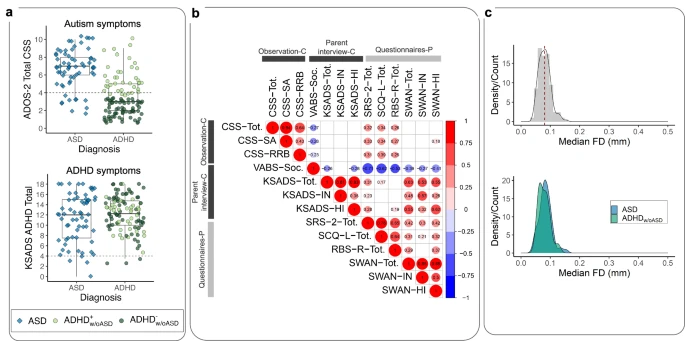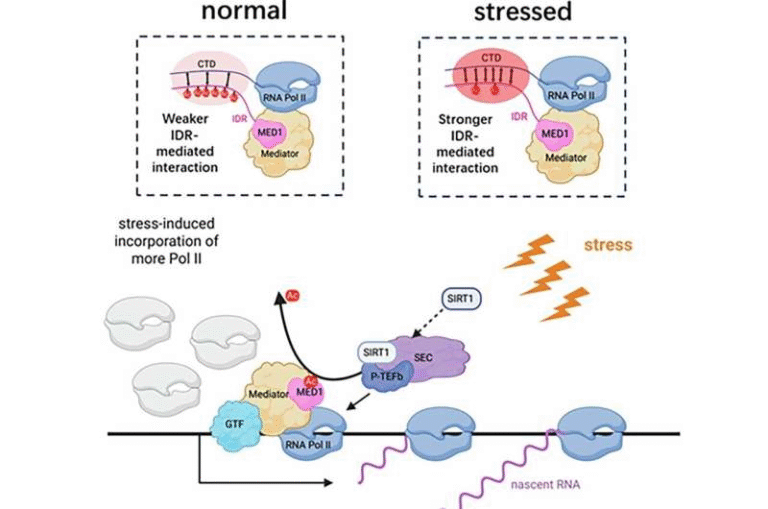Autism’s High Prevalence and Human Brain Evolution

Autism has long been considered a complex and uniquely human condition, but a new study published in Molecular Biology and Evolution offers a fresh perspective.
The research suggests that the relatively high prevalence of Autism Spectrum Disorder (ASD) in humans may be deeply connected to the way our brains evolved. According to the findings, some of the same genetic changes that gave us our distinctively human cognitive abilities may also have increased the likelihood of neurodiversity.
Autism Prevalence: By the Numbers
In the United States, approximately 1 in 31 children (about 3.2%) is diagnosed with Autism Spectrum Disorder. On a global scale, the World Health Organization estimates the prevalence to be around 1 in 100 children. These figures highlight how common autism is compared to other developmental conditions, making the exploration of its evolutionary roots even more significant.
Autism and Evolutionary Context
From an evolutionary perspective, autism—and even related conditions like schizophrenia—appear to be uniquely human. Behaviors associated with these disorders are rarely seen in non-human primates. What sets them apart is their link to advanced cognitive abilities, including language production and comprehension. These abilities are either completely absent in other species or exist in a far less complex form.
The implication here is clear: the same neural mechanisms that allow humans to speak, reason, and engage in abstract thought may also increase the risk for neurodevelopmental differences such as autism.
Tools That Made the Study Possible
One of the most important technologies driving this research is single-cell RNA sequencing (scRNA-seq). This tool allows scientists to study the genetic makeup of individual brain cells at a level of detail that was previously unimaginable.
As datasets grew larger, researchers began to notice not only the extraordinary diversity of brain cell types but also how some genes changed dramatically in humans compared to other mammals. Certain genomic elements remained stable across species, but in humans, they underwent rapid evolutionary changes.
Stable vs. Rapidly Changing Neurons
Earlier studies revealed that not all neurons evolve at the same pace. Some neuronal cell types are remarkably stable, showing little change across evolutionary time, while others evolve much more quickly. Until now, the reasons behind these differences were unclear.
In this study, researchers examined cross-species single-nucleus RNA sequencing data from three key regions of the mammalian brain. What they found was striking:
- The L2/3 IT neurons, which are the most common neurons in the brain’s outer layer (the neocortex), showed unusually rapid evolutionary changes in humans.
- These changes coincided with modifications in genes linked to autism.
- The findings suggest that natural selection specifically acted on these genes within the human lineage.
This discovery highlights a paradox: the very neurons that are most abundant and central to the functioning of the human cortex are also those that evolved most rapidly in humans.
The Role of Natural Selection
Why would natural selection favor changes in autism-linked genes? The researchers speculate that the answer may lie in the advantages these genetic modifications provided to early humans. Although the exact benefits remain uncertain, the data suggest that positive selection shaped these changes, rather than them being random byproducts of evolution.
One possibility is that the evolution of these genes contributed to slower postnatal brain development in humans compared to chimpanzees. Slower brain development means a longer window for learning and adapting during childhood, which may have been a key advantage in human evolution.
Another possibility is linked to language. Many autism- and schizophrenia-associated genes affect speech production and comprehension, traits that are uniquely advanced in humans. The rapid evolution of these genes could have increased the human capacity for complex language and communication.
Autism, Cognition, and Development
It is worth noting that many autism-linked genes are also associated with developmental delay. This suggests that the changes might not have been purely detrimental but instead came with a trade-off. A longer developmental timeline could have allowed for greater brain plasticity, enabling humans to develop more complex forms of thinking and problem-solving.
In this sense, autism may not be an evolutionary “mistake” but rather part of the spectrum of outcomes resulting from the same genetic shifts that gave humans their cognitive edge.
Broader Implications of the Study
The study’s lead author, Alexander L. Starr, emphasizes that the results support the idea that some of the same genetic changes that make the human brain unique also increase human neurodiversity. This view reframes autism not only as a condition but as an integral part of the evolutionary story of humanity.
The findings also underscore the importance of neurodiversity in understanding human biology. Instead of seeing autism purely as a disorder, this research encourages us to view it within the broader context of human variation and adaptation.
Autism Beyond Evolution: What We Know
To better appreciate the significance of these findings, it helps to look at what is already known about autism:
Genetics and Autism
Autism is highly heritable, with genetics playing a strong role. Hundreds of genes have been linked to autism, many of which affect synaptic function, brain connectivity, and developmental pathways. This new study highlights that some of these same genes were targets of rapid evolutionary change in humans.
Autism in Non-Human Species
While autism-like traits have been studied in animals, particularly in mice used for modeling human conditions, true autism—as defined in humans—does not seem to exist in non-human primates or other animals. This further supports the idea that autism is tied to human-specific brain features.
Neurodevelopmental Timing
Humans are unique in their prolonged brain development. Compared to chimpanzees, human infants are born with less mature brains and undergo much longer postnatal development. This extended timeline allows for learning complex behaviors, but it may also open the door to vulnerabilities such as autism and other neurodevelopmental conditions.
Evolutionary Trade-Offs
The concept of evolutionary trade-offs is central here. Evolution rarely produces perfect solutions; instead, it balances costs and benefits. The genes that contributed to slower brain development and enhanced language skills may have also increased susceptibility to autism.
This is similar to how other traits in evolution work. For example, the same genetic variants that protect against malaria can increase the risk of sickle-cell disease. In this case, the very features that allowed humans to develop unique cognitive abilities may also explain why autism is more common in our species.
Why This Matters
This research not only adds to our understanding of autism but also changes how we think about human evolution. Instead of viewing autism only as a challenge, we can begin to see it as part of the larger picture of what it means to be human.
By connecting autism to the fundamental changes that shaped the human brain, the study opens new doors for research into both neuroscience and evolutionary biology. It also provides a framework for appreciating the role of neurodiversity in society, science, and culture.
Conclusion
The findings are clear: autism-linked genes evolved rapidly in humans, particularly in abundant neuron types like L2/3 IT neurons. These changes were likely driven by natural selection and may have contributed to uniquely human traits such as slower brain development and advanced language skills. At the same time, they increased the prevalence of autism, making it a possible evolutionary trade-off.
This research provides an important reminder that the same forces that made our brains exceptional also made them more diverse. Understanding autism in this context helps us see it not just as a condition but as part of the broader human story.





